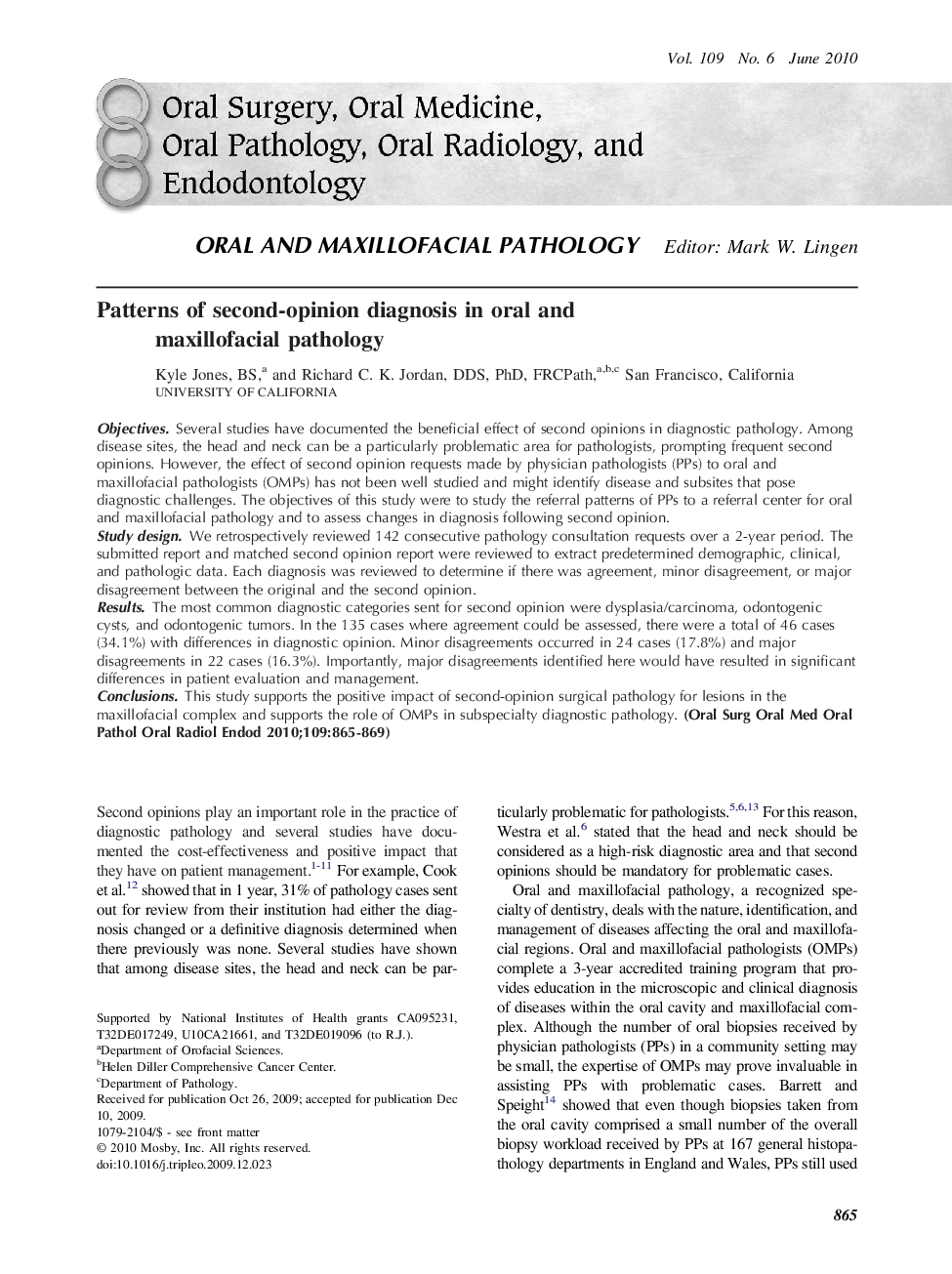| Article ID | Journal | Published Year | Pages | File Type |
|---|---|---|---|---|
| 3167365 | Oral Surgery, Oral Medicine, Oral Pathology, Oral Radiology, and Endodontology | 2010 | 5 Pages |
ObjectivesSeveral studies have documented the beneficial effect of second opinions in diagnostic pathology. Among disease sites, the head and neck can be a particularly problematic area for pathologists, prompting frequent second opinions. However, the effect of second opinion requests made by physician pathologists (PPs) to oral and maxillofacial pathologists (OMPs) has not been well studied and might identify disease and subsites that pose diagnostic challenges. The objectives of this study were to study the referral patterns of PPs to a referral center for oral and maxillofacial pathology and to assess changes in diagnosis following second opinion.Study designWe retrospectively reviewed 142 consecutive pathology consultation requests over a 2-year period. The submitted report and matched second opinion report were reviewed to extract predetermined demographic, clinical, and pathologic data. Each diagnosis was reviewed to determine if there was agreement, minor disagreement, or major disagreement between the original and the second opinion.ResultsThe most common diagnostic categories sent for second opinion were dysplasia/carcinoma, odontogenic cysts, and odontogenic tumors. In the 135 cases where agreement could be assessed, there were a total of 46 cases (34.1%) with differences in diagnostic opinion. Minor disagreements occurred in 24 cases (17.8%) and major disagreements in 22 cases (16.3%). Importantly, major disagreements identified here would have resulted in significant differences in patient evaluation and management.ConclusionsThis study supports the positive impact of second-opinion surgical pathology for lesions in the maxillofacial complex and supports the role of OMPs in subspecialty diagnostic pathology.
